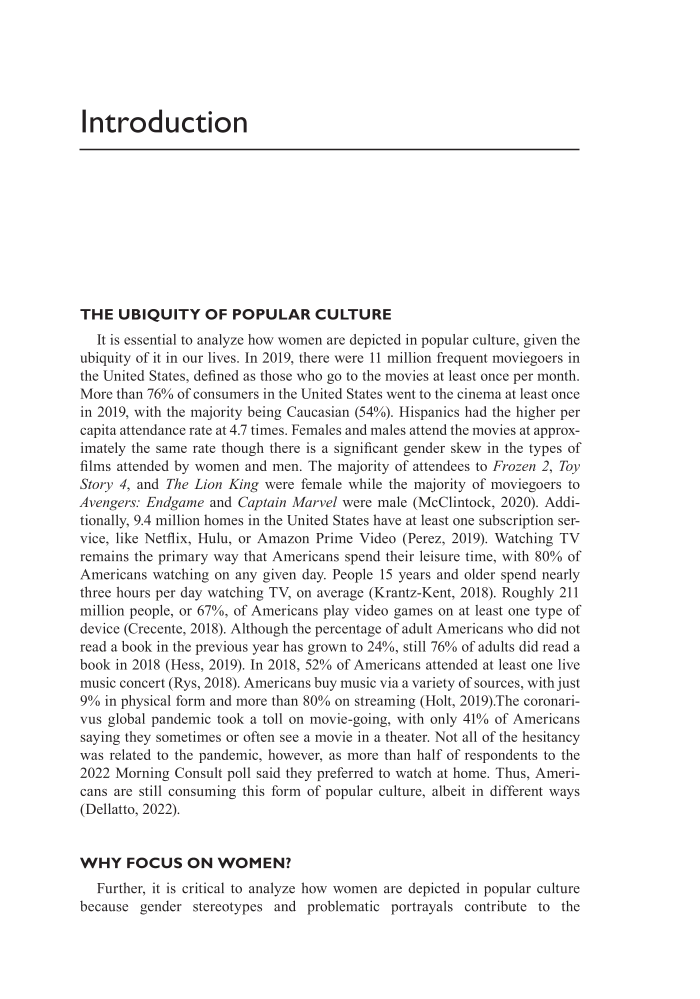Introduction THE UBIQUITY OF POPULAR CULTURE It is essential to analyze how women are depicted in popular culture, given the ubiquity of it in our lives. In 2019, there were 11 million frequent moviegoers in the United States, defined as those who go to the movies at least once per month. More than 76% of consumers in the United States went to the cinema at least once in 2019, with the majority being Caucasian (54%). Hispanics had the higher per capita attendance rate at 4.7 times. Females and males attend the movies at approx- imately the same rate though there is a significant gender skew in the types of films attended by women and men. The majority of attendees to Frozen 2, Toy Story 4, and The Lion King were female while the majority of moviegoers to Avengers: Endgame and Captain Marvel were male (McClintock, 2020). Addi- tionally, 9.4 million homes in the United States have at least one subscription ser- vice, like Netflix, Hulu, or Amazon Prime Video (Perez, 2019). Watching TV remains the primary way that Americans spend their leisure time, with 80% of Americans watching on any given day. People 15 years and older spend nearly three hours per day watching TV, on average (Krantz-Kent, 2018). Roughly 211 million people, or 67%, of Americans play video games on at least one type of device (Crecente, 2018). Although the percentage of adult Americans who did not read a book in the previous year has grown to 24%, still 76% of adults did read a book in 2018 (Hess, 2019). In 2018, 52% of Americans attended at least one live music concert (Rys, 2018). Americans buy music via a variety of sources, with just 9% in physical form and more than 80% on streaming (Holt, 2019).The coronari- vus global pandemic took a toll on movie-going, with only 41% of Americans saying they sometimes or often see a movie in a theater. Not all of the hesitancy was related to the pandemic, however, as more than half of respondents to the 2022 Morning Consult poll said they preferred to watch at home. Thus, Ameri- cans are still consuming this form of popular culture, albeit in different ways (Dellatto, 2022). WHY FOCUS ON WOMEN? Further, it is critical to analyze how women are depicted in popular culture because gender stereotypes and problematic portrayals contribute to the
Document Details My Account Print multiple pages
Print
You have printed 0 times in the last 24 hours.
Your print count will reset on at .
You may print 0 more time(s) before then.
You may print a maximum of 0 pages at a time.










































































































































































































































































































































































































































































































































































































































































































































































































